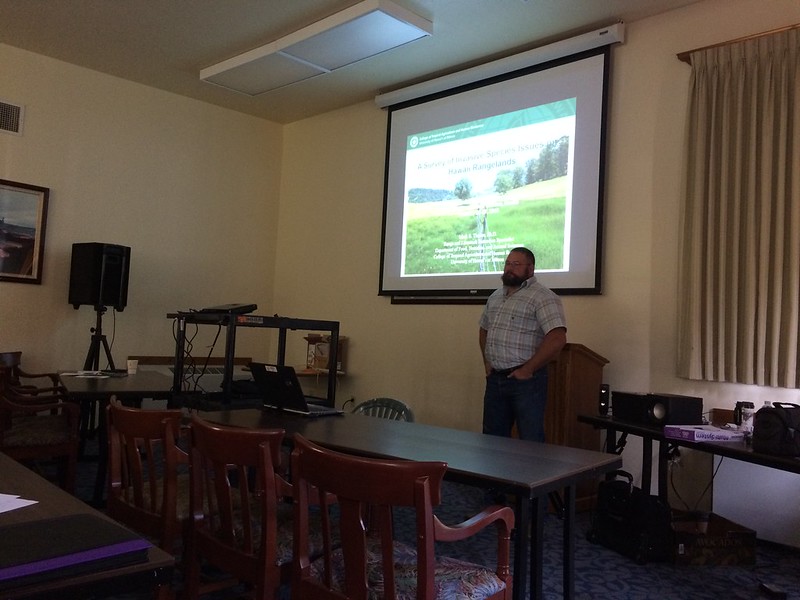Elizabeth Pickett shares lessons learned from the youth stewardship program she runs called Ocean Warriors.
Much of what HWMO does falls under the category of “environmental education.” Talking about wildfire prevention requires making the connection that our built environment is intertwined with the natural world. From June 8 through 10, the Hawaiʻi Environmental Education Alliance hosted a symposium for it’s sixth year to gather environmental educators from across the state. HWMO attended the symposium, which was held at Hawaiʻi Volcanoes National Park Kilauea Military Camp, on June 9. The theme this year was climate change, a topic that has numerous intersections with wildfires in Hawaiʻi.
The day began with a sobering, yet very informative talk from Dr. Chip Fletcher, a scientist from UH Mānoa’s School of Ocean and Earth Science and Technology. His talk gave insight on a multitude of factual examples of how climate change has already taken Hawaiʻi by storm, no pun intended. Of those many examples, increased drought and shifts in vegetative cover were highlighted, conditions that will continue to increase wildfire risk statewide. Throughout the rest of the day, various educators shared examples of how they had used climate change as a framework to teach valuable lessons about the environment. Elizabeth Pickett, HWMO’s Executive Director, is not only a wildfire educator, but she is also youth environmental stewardship educator through the Malama Kai Foundation Ocean Warrior’s program. Elizabeth gave a presentation about the program and shared lessons learned on how to best encourage youth to become environmental leaders in their community.
HWMO’s Community Outreach Coordinator, Pablo Beimler, also gave a presentation on behalf of Hawaii Wildfire. His presentation highlighted various youth products that HWMO has produced for educators including our very own K-8th grade curriculum, kNOw Fire. Several educators from across the state were on hand for the presentation, some of whom enthusiastically expressed that they were willing to integrate the curriculum into their own work.













